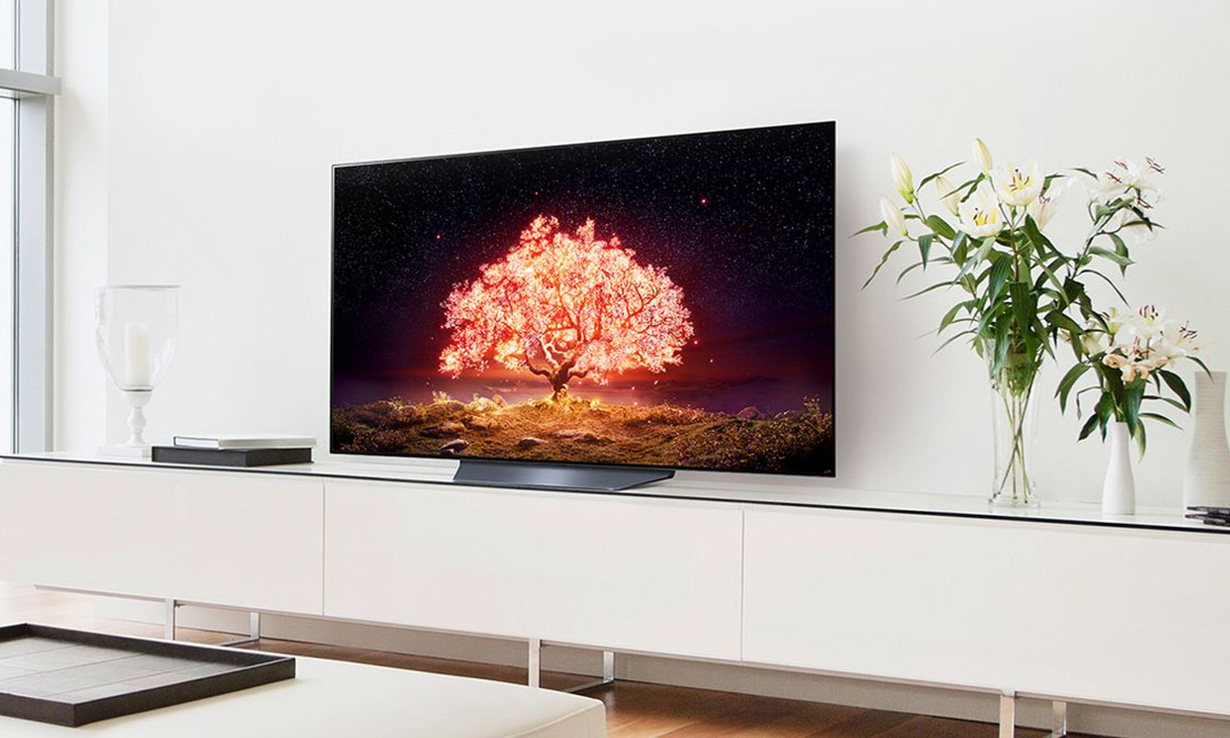
Is Bigger Always Better? How To Choose The Perfect TV
Look around you – TVs are getting bigger. Today, anything under 32 inches would now be classed as a small TV, and these sizes are often only chosen as secondary TVs for bedrooms or kitchens. When it comes to sitting room TVs, 55, 65 or even 75 inches and above are not uncommon, and more people than ever are choosing to upsize TV when the chance presents.
TV manufacturers have supported this trend, designing models that are ever larger than their preceding generations. But is bigger always really better?
While many people will instinctively feel like a larger screen is preferable, there are a number of factors to weigh up in making any decision. So how should you guide your TV purchase vis a vis the size of the unit, and what other factors should be taken into account before you make up your mind?

When Large is Too Large…
Screens that are too big for the space can undermine the quality of the viewing experience. Aside from being physically too large to be a comfortable fit in your room, you may end up finding it a struggle to take in the whole picture easily. Larger screens need to be further away from your viewing position so you can see the whole picture. You may also notice a drop in quality as individual pixels on the screen become more visible, depending on the TV you buy.
You should always consider the dimensions of your room when choosing a TV, as well as the distance from your viewing position, and how scale impacts picture quality. Going too large can too easily feel like a step down, compromising the picture and making it less comfortable to view. At extremes, this can also result in eye strain and headaches, which are top of precisely no one’s wish list when they’re buying a new TV.
A Rule of Thumb for TV Sizing
Measure the distance between your viewing position and the TV in inches. Divide this number by 1.4, and you’ll have an approximation of the correct sized TV for your space. So, for a TV that is 6 feet away from your sofa, you would look to buy something no greater than 50”. Choosing a 75+ inch TV in this example would be going way too big.
Some online TV sizing guides even suggest using 9 feet as a minimum for a 50” TV. Obviously there are elements of personal taste here – if you’re unsure, creating a template TV out of cardboard sized to different dimensions can help give you an indication of whether you’re on for the right sized TV for your room.
Multi-Purpose TVs
TVs aren’t just for watching TV any more – there’s the likes of films, YouTube, music, even gaming to consider. Online slot games, for example, offer great entertainment in the home. One of the main benefits of slot sites over land-based casinos is the ability to play from the comfort of your own home, using your own technology – including your choice of monitor and screen size. Modern TVs can fulfil this role too, and you should consider all of the other functions your TV will perform when assessing which size to choose.
Again, going too big can leave you struggling to keep up with the action, especially when you’re gaming. Try to keep things to a size where you can comfortably see all the screen from your seated position, whether you’re watching YouTube, enjoying a movie, or gaming.
Consider a Step Down for a Better Quality Picture
Stepping down one notch in sizing can often deliver a better picture quality. TV displays that are too large can seem pixelated up close, leading to a less clear picture and a less enjoyable viewing experience. By pulling things in just a couple of inches, you’ll see a higher quality picture with fewer visible pixels, so you can get a clearer view from your new TV.
This shouldn’t be the case if you’re going for 4K ultra-HD TVs, where the picture quality will be strong no matter how closely you’re viewing. However, for TVs that are not 4K compatible, and in some cases content that is not shot in 4K, the difference in quality between bigger and smaller here can be significant.
Think about wall mounting, height of display and viewing angle – they all matter here too. Aiming for the biggest TV your room can accommodate often misses important subtleties that can be better addressed by opting for a TV of a slightly smaller size.
Don’t Rule Out Smaller Brands
The big brands like Samsung, Sony and LG have loads of TVs to choose from across different sizes. But there’s much to be said for some of the more niche brands, where you can often find better quality and lower prices, if you’re prepared to do your homework.
Start your research at online comparison sites, and don’t be afraid to shop around in-store before making up your mind. TVs are an important purchase for your home and quality of living. Take the time it needs to settle on the right size for you.







